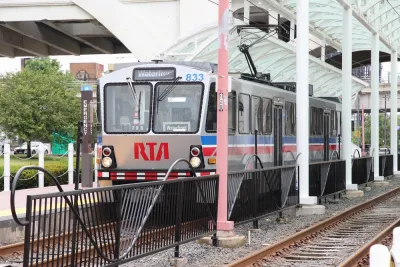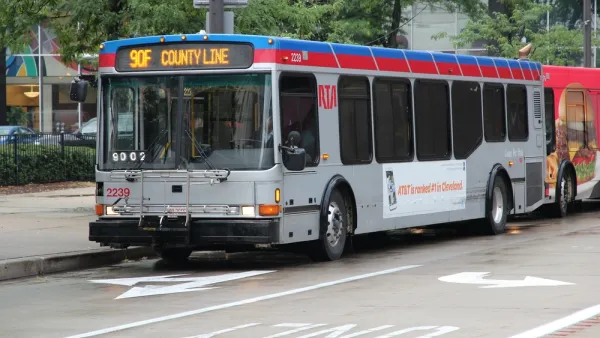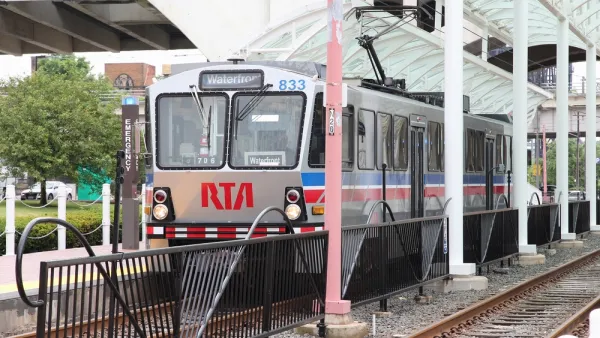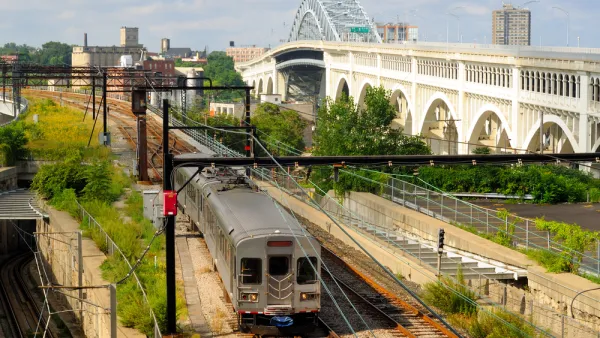The Greater Cleveland Regional Transit Authority's Waterfront rail line carries 400 riders a day. As the authority struggles to fill a $7 million budgetary gap, is it time to finally bury the unused line?

Tim Kovach explores the implications of a recent decision to raise fares on the Greater Cleveland Regional Transit Authority (GCRTA) system in light of a $7 million budget shortfall. The GCRTA Board of Trustees recently "approved a series of stepwise fare increases that will take effect on August 16, which should increase annual operating revenues by $3.5 million. Single-ride fares will increase to $2.50 from $2.25 currently and, ultimately, rise again to $2.75 in August 2018. All day passes will increase from $5 to $5.50 and ultimately $6, while monthly passes will jump from $85 to $95 and then $105."
Not only do those fare increases mean "Cleveland’s fares are now on par with, or even higher than, some of the most extensive transit systems in the country," writes Kovach, they also won't cover the extent of the deficit.
Which brings Kovach to the debate over what to do with the GCRTA's "Ghost Line"—officially known as the Waterfront rail line, "which ferries customers from the Tower City transit hub along the Cuyahoga River and lakefront to the South Harbor," carrying 400 passengers a day and an average of two riders per off-peak train.
The main theme of the article is what exactly to do about the Ghost Train, in light of development expectations along the line as well as sunk cost (the line cost $50 million to construct and opened in 1996). Kovach recommends a few steps planners and local officials should take to determine the future of the line.
FULL STORY: Asking some lingering questions about cutting service on the Waterfront Line

Analysis: Cybertruck Fatality Rate Far Exceeds That of Ford Pinto
The Tesla Cybertruck was recalled seven times last year.

National Parks Layoffs Will Cause Communities to Lose Billions
Thousands of essential park workers were laid off this week, just before the busy spring break season.

Retro-silient?: America’s First “Eco-burb,” The Woodlands Turns 50
A master-planned community north of Houston offers lessons on green infrastructure and resilient design, but falls short of its founder’s lofty affordability and walkability goals.

Test News Post 1
This is a summary

Analysis: Cybertruck Fatality Rate Far Exceeds That of Ford Pinto
The Tesla Cybertruck was recalled seven times last year.

Test News Headline 46
Test for the image on the front page.
Urban Design for Planners 1: Software Tools
This six-course series explores essential urban design concepts using open source software and equips planners with the tools they need to participate fully in the urban design process.
Planning for Universal Design
Learn the tools for implementing Universal Design in planning regulations.
EMC Planning Group, Inc.
Planetizen
Planetizen
Mpact (formerly Rail~Volution)
Great Falls Development Authority, Inc.
HUDs Office of Policy Development and Research
NYU Wagner Graduate School of Public Service




























